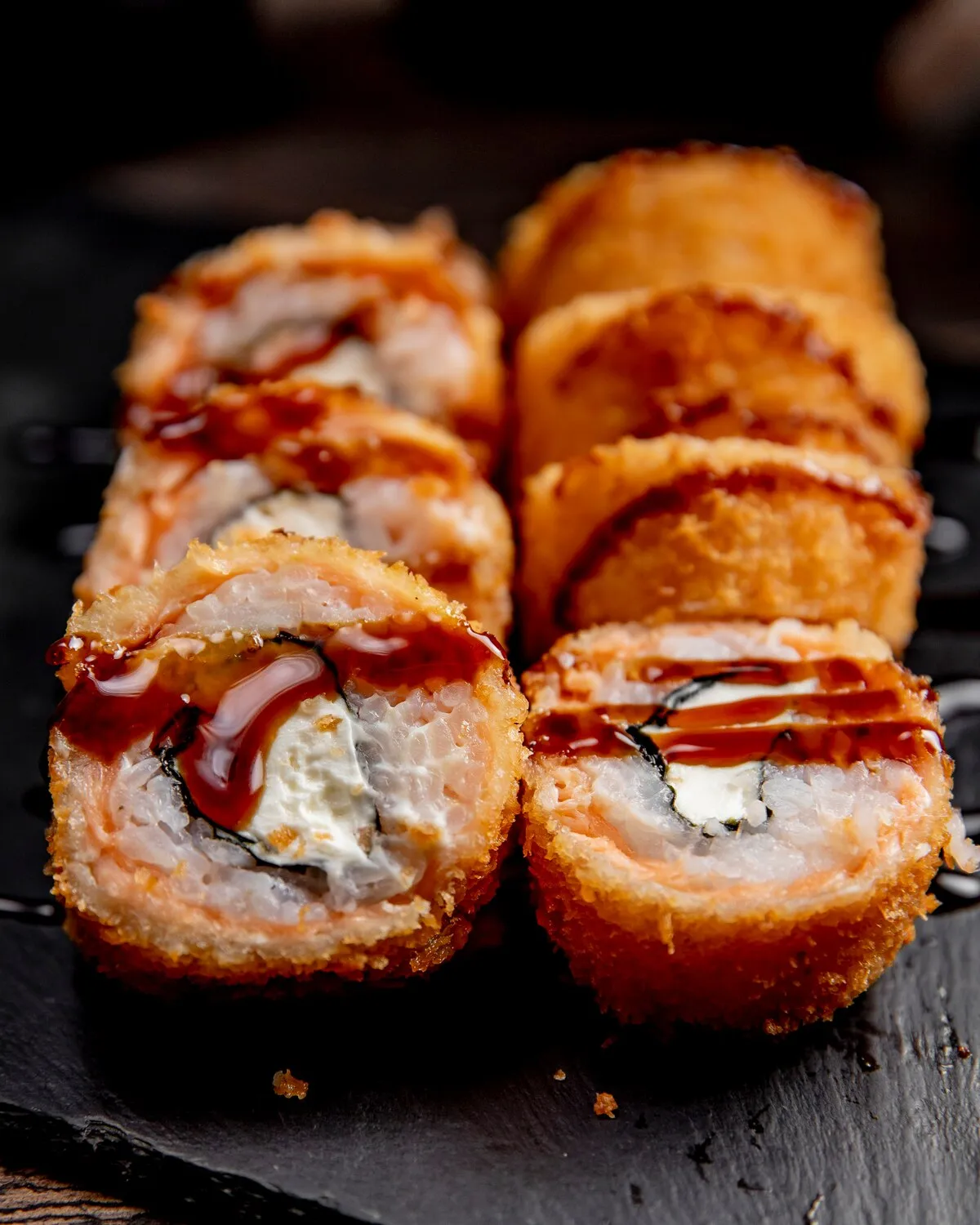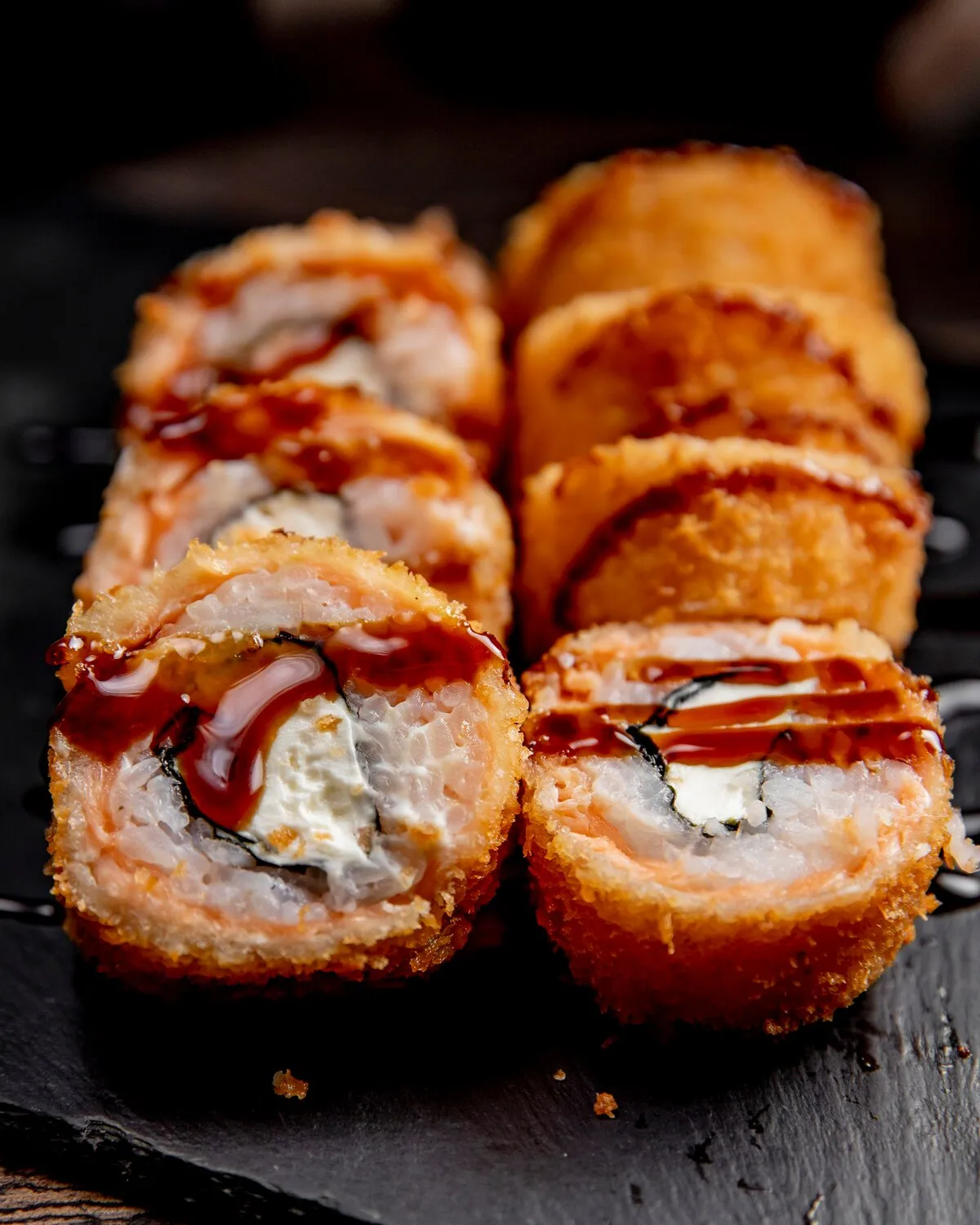
Hot Roll
Fried sushi roll, often filled with salmon, cream cheese, and other ingredients. One of the most popular items.
Nutrition Facts
* The % Daily Value (DV) tells you how much a nutrient in a serving of food contributes to a daily diet. 2,000 calories a day is used for general nutrition advice.
Saikoo
The Hot Roll, a type of fried sushi roll, is a relatively modern invention, largely popularized in the United States during the late 20th century as Americanized sushi gained traction. It represents a departure from traditional Japanese sushi and reflects a desire to adapt sushi to Western palates.
The Hot Roll reflects the Americanized adaptation of sushi, catering to Western tastes and preferences. It's often viewed as a gateway dish for those unfamiliar with traditional raw fish sushi.
American Fusion
Hot Rolls exemplify the fusion of Japanese culinary techniques with American ingredients and preferences, resulting in a unique and distinct style of sushi.
Accessibility and Popularity
Its cooked ingredients and palatable flavors have made the Hot Roll a popular and accessible option, especially for those who may be hesitant to try raw fish.
Restaurant Staple
Hot Rolls are a common item on the menus of many sushi restaurants across the United States and beyond, showcasing their widespread popularity.
The Hot Roll offers a contrasting and appealing flavor profile, combining the richness of cooked salmon and cream cheese with the crispy texture of the fried exterior and the subtle tang of sushi rice and seaweed. Savory, creamy, and crunchy elements are harmoniously balanced.
The primary flavors are the savory, slightly sweet, and fatty taste of cooked salmon, the smooth and tangy creaminess of the cream cheese, and the subtle vinegary notes from the sushi rice. The seaweed (nori) contributes a slightly salty and umami element. The fried coating adds a satisfying crunch and a hint of oiliness, which complements the other flavors. Additional ingredients like avocado or spicy mayo can further enhance the overall flavor complexity.
Rice Preparation
Use properly prepared sushi rice seasoned with rice vinegar, sugar, and salt for the authentic flavor and texture. The rice should be sticky but not mushy.
Rolling Technique
Ensure a tight and even roll to prevent the roll from falling apart during the frying process. Use a bamboo rolling mat (makisu) for best results.
Frying Temperature
Maintain a consistent oil temperature (around 350-375°F or 175-190°C) for even frying and optimal crispiness. Avoid overcrowding the fryer.
Breading
A light coating of tempura batter or panko breadcrumbs can add a delightful crunch. Ensure the roll is fully coated before frying.
Serving
Serve the Hot Roll immediately after frying to enjoy its maximum crispiness and flavor. Pair with dipping sauces like soy sauce, spicy mayo, or eel sauce.
Explore additional Japanese Fusion dishes and restaurants
Explore Japanese FusionDiscover top dining spots and culinary experiences in Barretos.
Explore BarretosLearn more about the food culture, restaurant scene, and culinary heritage of Brazil.
Explore Brazil
